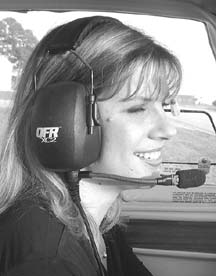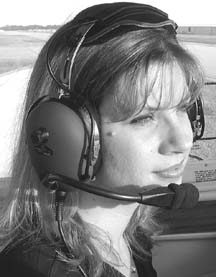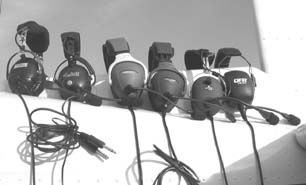Although Bose shocked the aviation world with a $1000 price tag for a headset, the market has since become much more price stratified. Where it took a grand to play ANR a decade ago, you can now buy a decent-actually impressive-noise canceling headset for a third of that. In this article, we’ll report on our flight trials with what can best be described as five budget ANR headsets. In a subsequent report, we’ll examine mid- and higher-priced ANRs.
As the market becomes more saturated with headsets of all sorts, the manufacturers have clearly decided there’s a low end and theyre right. Why spend $1000 or even $600 if you fly 50 hours a year on short trips where long-term comfort isn’t an issue? And how about the passenger seats, which are rarely occupied? There’s no point in equipping those seats with high-dollar ANR when less expensive models will do for occasional use.
In any case, the bottom line is this: even budget ANR is better than no ANR, in our view. While its true that a $300 headset may not be as comfortable as one costing $1000 and its mechanical detailing might not be as flawless, its also true that the ANR in the higher-priced headset wont be perceived as being three times better, if its perceived as being better at all. Frankly, ANR performance is so subjective that were not sure everyone would agree there’s a discernible difference in performance from the cheapest headset to the most expensive. Comfort is another matter, however.
Whats Wanted?
Assuming, as the manufacturers have, that not every buyer wants an expensive ANR headset, what should we expect of a budget noise canceling model? In our view, comfort, mechanical robustness, convenience of power supply, ANR performance and weight are the top considerations, in that order. In our estimation, comfort is another word for clamping pressure or lack thereof.
Its an important element in headset design because if the thing squeezes your head or clips your ears, no amount of high-tech noise canceling will make you happy. Second, weve heard from many readers who rave about the new in-the-ear lightweight headsets on comfort grounds alone, despite the fact that these devices offer no active noise canceling at all and vary widely in passive canceling capability. In-the-ear models have no clamping pressure and some users consider this important above all else.
If a headset is used much, it will get abused; dropped, rolled around in the baggage compartment and exposed to broiling and freezing cabin temperatures for months on end. This is a brutal, real-world test of the materials used in headsets, chiefly various kinds of plastics and adhesives. While were unable to discern long-term durability of the headsets reviewed in this article, we can make on-the-spot evaluations of construction quality.
Last, battery boxes and power supplies. This has become somewhat of a sore point with users of ANR headsets and were not sure any manufacturer has gotten it just right yet. What we pine for are unobtrusive battery boxes that are placed far enough along the audio cord not to be a nuisance.
We also want LED indicators that show when the headset is turned on and/or auto shutoff devices that turn them off to preserve the batteries when the user neglects to power down on his own. And how about a dual-power option that allows either battery or ships power to run the headset? While were at it, could the industry please agree on a standard power receptable for ships power? Why must customers jump through hoops to have this option in their airplanes?
What We Tested
There are so many ANRs on the market that we decided to sort them out by price and to limit our trials to five headsets. Among the bargain models, we skipped the Telex Echelon 150 ($299) this time because we werent able to get a test unit to meet our deadline. Similarly, we skipped the LightSPEED 20XL/2, at $399, because we have tested it before and we wanted to limit our trials to a manageable number. In the under $400 class, our group included the SoftComm C-90 ($299), the Headsets, Inc. EM-1 ($399), the LightSPEED QFR-XC2 and 15XL (both $339) and the Flightcom Classic ANR at $395.
We examined each headset carefully, cataloging its features and we then flew with all of the models in a Mooney, with two testers in the front seat and one in the back seat. We passed each of the headsets back and forth and recorded our findings on a standard sheet, listing the categories noted in the chart on page 20. We would rate the Mooney cabin as noisier than the typical GA airplane and even nosier than typical Mooneys because it had a leaky inflatable door seal. The airplane was also equipped with an intercom. We did a ground test of the SoftComm cellphone interface but we did not test the Headsets EM-1 ships power interface; we assumed that it works as claimed.
Some general notes on construction of headsets: David Clark pioneered the aviation headset market with a robust design consisting of a pair of durable plastic earcups mounted to a spring steel headband. Over the years, Clark has used various mic booms, chiefly a wire-frame design or a flexible rubber boom. Clark headsets have earned a reputation for being durable and all but immune to abuse. (We have a 20-year-old Clark thats never seen any repairs and continues to function as we’ll as new.)

Clarks design was so good, in fact, that many manufacturers have simply copied its principle features, sometimes improving them, sometimes not. Generically, we refer to these headsets as Clark clones in that theyre based on the Clark idea, if not direct copies.
With their oval plastic earcups and steel yokes, the SoftComm and Flightcom are Clark-style headsets. However, the LightSPEEDs are made almost entirely of plastic and have earcups and earseals of an entirely different design. These we consider to be clean sheet ANRs, not Clark-type designs with ANR added.
One complaint users have about Clark-type headsets is high clamping pressure. In a passive-only headset, higher clamping pressure is necessary to obtain a good seal between the users head and the earcup. Without it, passive noise attenuation is less effective. With active noise cancelation, high clamping pressure isn’t as important but any ANR designed in the Clark style may have it. Weve found that this, more than any other factor, impacts headset comfort.
Flightcom Classic ANR
As the name implies, this is a Clark-style platform thats stoutly built, with heavy earcups and a unique mic boom that has both a wire frame and universially adjustable rubber boom. For earseals, it uses thick Confor pads-perhaps a little too thick, in our view-and it comes standard with a headpad and volume control on each earcup.
At 18.5 ounces, this was among the heaviest of the ANRs we tried but, as noted, were not convinced that weight is much of a determinant for comfort; clamping pressure is. The Classic ANR is powered by a single 9-volt battery housed in a smallish and unobtrusive case with low battery warning and on/off LEDs, a feature with think is a must. The battery case has a clip that can be attached to a belt or to an aircraft side pocket. Of all the battery cases, the Classic ANRs was the smallest. It doesnt, however, have provisions for ships power.
As far as performance, our testers rated the Flightcom as fair to good in ANR and fair in passive attuention when the ANR was switched off. The earseals have an overstuffed feel which, while creating a good seal, also yields fairly high clamping pressure. But in our view, this is about as comfortable as a Clark-style headset gets. Overall, our test panel liked the Classic ANR a bit better than the higher-priced Denali. The Classic ANR comes with a carrying case and has a three-year warranty and a 30-day fly em and try em guarantee.
SoftComm C-90ANR
At $299 and 19.4 ounces, this is one of the least expensive but also one of the heaviest ANRs in this group. Overall, we thought it delivered remarkable quality and performance for the price. Like the Classic ANR, its a Clark-style design with a continuously adjustable mic boom and a padded headband. Curiously, at this price, it has no case but it was the only headset in the bargain group to have the cellphone interface. Given the choice, we can do without the case.
On the other hand, we found that the 9-volt battery box could use some work. In our view, its generally not up to the quality of the rest of the headset; it had no power-on LEDs and the switch is easy to accidentally bump on. Since it has no auto shutoff feature, a dead battery will be the result.
Comfort and performance wise, it runs in the middle, in our estimation. We found that perceived active and passive noise attenuation were in the fair to good range while comfort was fair. But if the cellphone interface is important and youre on a budget, this one is a winner.
LightSPEED QFR
LightSPEED has made quite a name for itself in the aviation world with moderately priced headsets that perform we’ll while also remaining comfortable for long periods. In our view, the QFR continues that tradition, although this headset represents a point of departure from previous designs. LightSPEED has traditionally used plastic throughout its headsets-there is a metal headband for tension inside the plastic, however-but the QFR is different. It has a pair of wire yokes to support the earcups and our guess is that these contribute to the headsets light 15-ounce weight.

For batteries, the QFR uses the LightSPEED standard: two AA cells in a well-designed in-line battery case having separate volume and LEDs for power and low battery warning. It also has auto power shutoff.
LightSPEED is we’ll known for having large, deep earseals and the QFR follows this tradition with close cell acoustic foam for the pads. We found these to be comfortable and, just as important, dry when the weather gets warm. Sweaty earseals contribute to discomfort, in our view. Perceived noise cancellation of the QFR is excellent, according to our test panel. Overall, for comfort, construction and performance, this one earned a top rating.
Worth noting here is that although we didnt test it with this group, LightSPEED offers the 20XL/2, an improved variant of the orginal LightSPEED models we last examined. The 20XL/2 uses what can be considered LightSPEEDs standard construction, a heavily padded plastic-covered headband and beefy plastic yokes for the earcups. At $399, this headset is also a contender.
LightSPEED 15XL
But the 15XL one isn’t a contender, in our view. Unlike the other model LightSPEEDs, we think this unit doesnt stand out in either the passive-we rated it poor-or the ANR mode. Despite its low price of $339 and light weight, we were somewhat disappointed in the perceived performance of this product. The ANR just didnt seem as effective, in our view, letting in more extraneous noise than did its stablemate QFR and the other ANRs in this group.
The 15XL is, however, quite comfortable, thanks to the earcup and seal design. Excluding the comfort factor, however, LightSPEEDs own QFR, the Flightcom, Headsets EM-1 and the SoftComm performed significantly better, in our estimation. We liked the 15XLs compact battery box and auto shutoff but it has no bells and whistles, such as cellphone interface, case or dual power. We don’t see anything special to recommend the 15XL.
Headsets Inc. EM-1
Headsets, Inc. is an Amarillo, Texas-based company best known for manufacturing ad-on ANR kits that convert passive headsets to ANR. Theyve sold a number of kits and weve tried them twice, with good results. The EM-1 marks the companys first foray into purpose-built headsets with a Clark-style design retailing for $399. We were impressed with the attention to detail on this headset; it has a beefy, well-made feel and look. But at 20 ounces, its slightly heavier than the competition and we thought it had noticeabley heavier clamping pressure than the LightSPEED models.
Of course, that also gives it good passive attenuation if the ANR circuitry goes west or the battery dies. Speaking of which, it uses a single 9-volt battery in a simple battery box but with automatic shut off.
Unique among headsets in this price range, you can hardwire the EM-1 to ships power using an optional panel-mount power supply suitable for either 12- or 24-volt systems. The power supply has its own inline fuse protection. There’s no cellphone or music interface but we found the ANR performance to be on par with any of the others and comfort was fair.
Conclusion
Our top rating for this round goes to the LightSPEED QFR. Its light, performs we’ll and the price is right. We don’t find much fault with it, other than the lack of cellphone interface. As noted, the LightSPEED 20XL/2 is also a good choice, based on previous experience with this product.
Second choice? A tough call. We would say its a toss-up between the Headsets, Inc. EM-1 and the SoftComm. We like the EM-1 construction and ANR performance but the SoftComm has that cellphone feature, which we think is a terrific feature. Its also $100 cheaper.
Contacts
• Flightcom Corporation, 503-684-8229, www.flightcom.net
• Headsets, Inc., 806-358-6336, www.headsetsinc.com
• LightSPEED Aviation, Inc., 503-968-3113, www.anrheadsets.com
• Softcomm Products, Inc., 480-917-2328, www.softcommheadsets.com
• Telex Communications Inc., 952-884-4051, www.telex.com
-Coy Jacob is an Aviation Consumer contributing editor.


